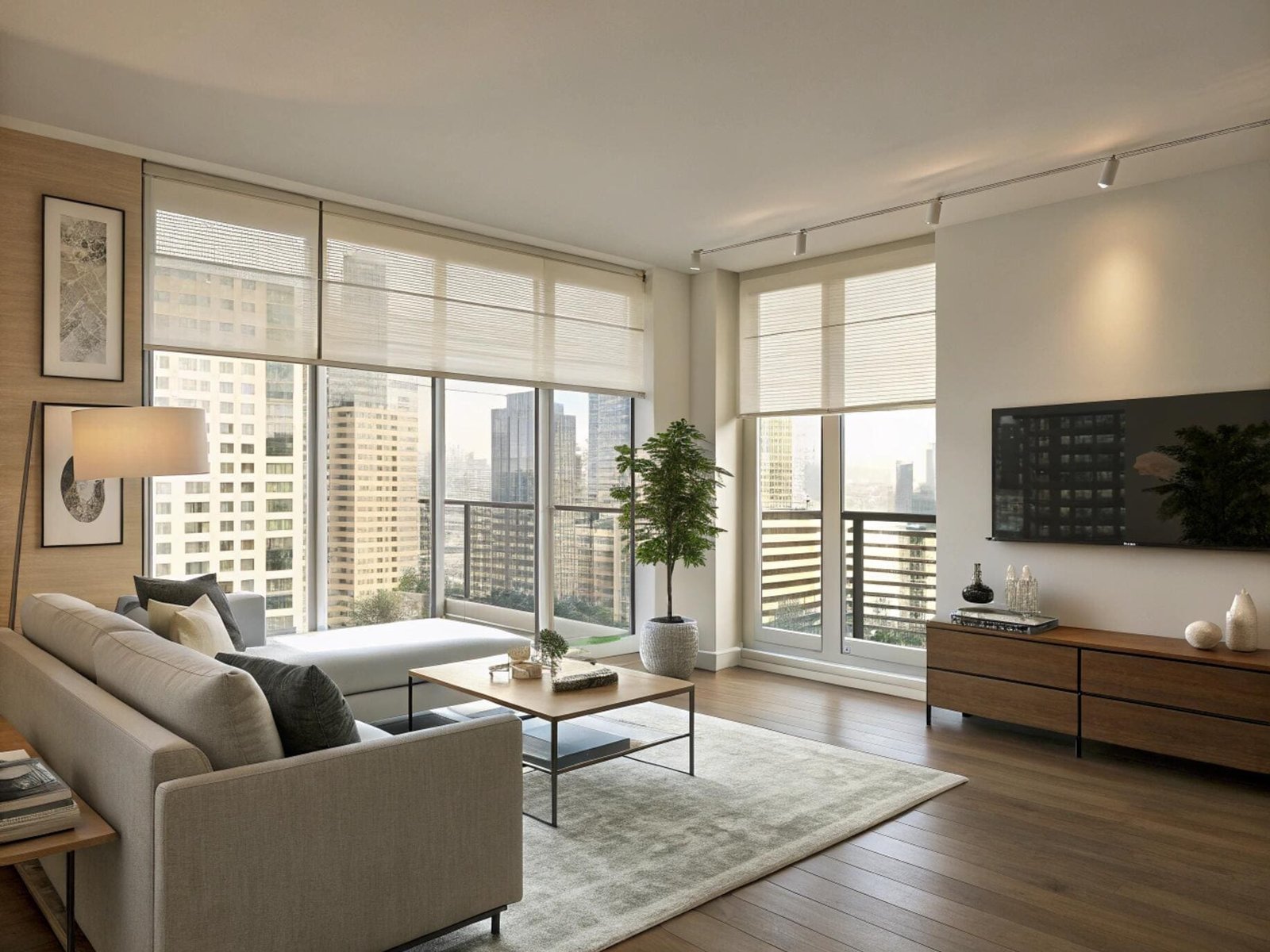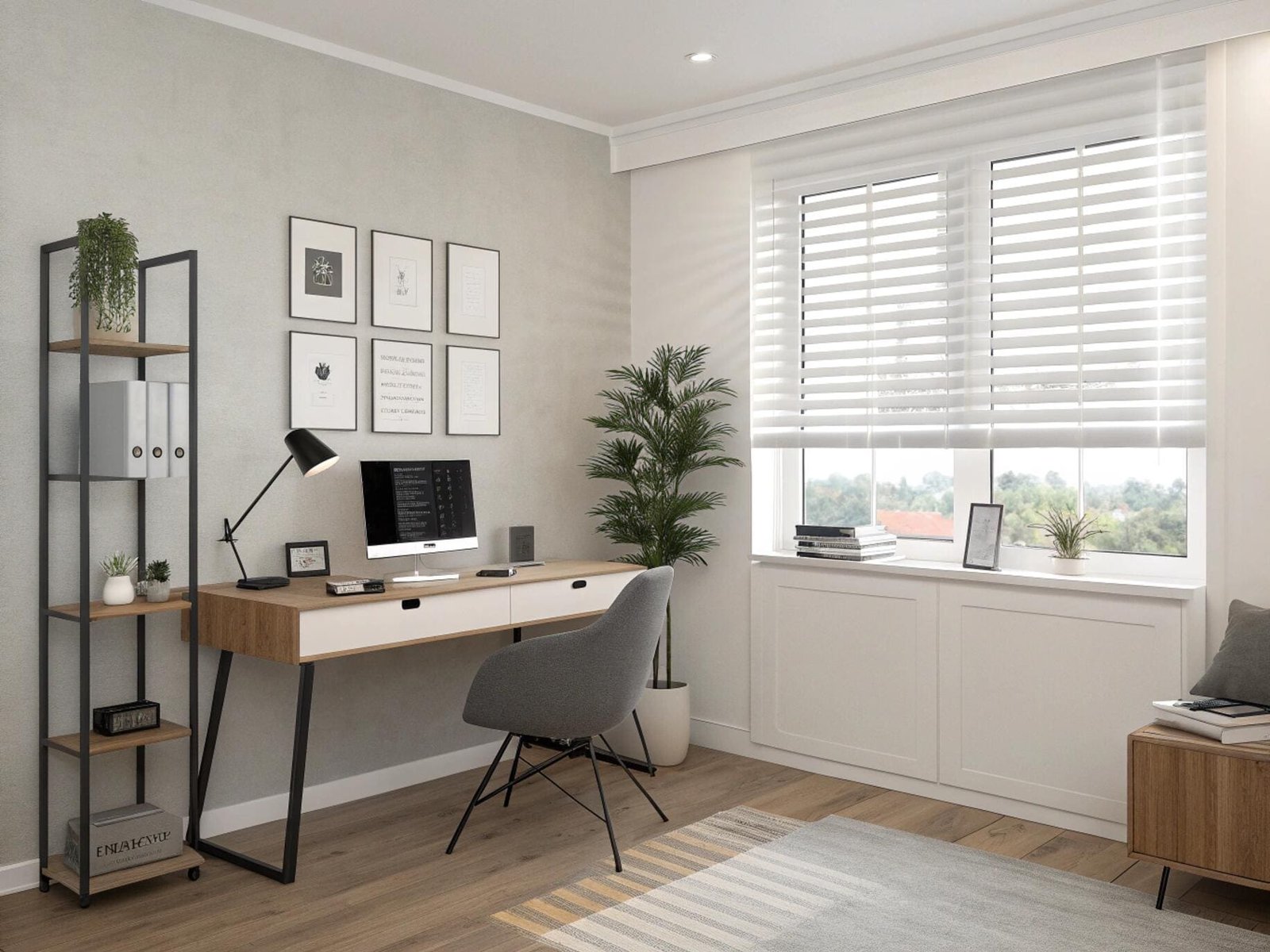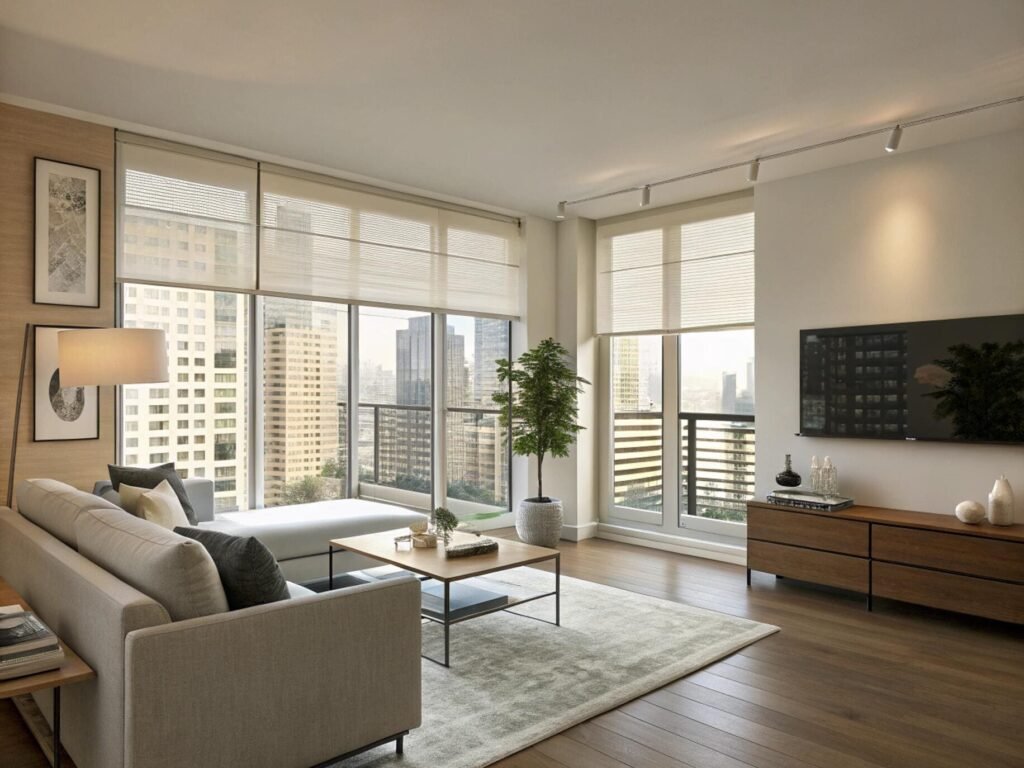You love the idea of smart blinds, but worry they're delicate, complex machines. The last thing you want is another high-tech gadget that requires constant, complicated upkeep.
No, smart blinds[^1] do not require special maintenance. The main tasks are simple dusting and occasional battery recharging[^2]. Cleaning them is nearly identical to manual blinds[^3], with the only difference being extra care to keep the electronic components dry .
[^4] for optimal thermal insulation and light.](https://velablinds.com/wp-content/uploads/2025/08/1-104.jpg)
One of the biggest surprises for my professional partners, like interior designer Emma, is how low-maintenance[^5] smart blinds truly are. There's this assumption that "smart" means "fragile" or that caring for them will be a technical chore. In reality, the day-to-day upkeep is incredibly simple. The only real "maintenance" is recharging the battery, which for most people is just a once-a-year task. Keeping them looking great is as easy as a light dusting. This simplicity is a huge selling point, because no one wants to invest in a convenience that becomes an inconvenience to own.
How do you clean smart blinds?
You want to keep your client's new blinds looking perfect, but you're afraid to clean them. You worry that using water or the wrong cleaner could damage the expensive motor.
Clean smart blinds by dusting them regularly with a vacuum's soft brush attachment or a lambswool duster. For stains, use a slightly damp cloth, but never spray liquid directly onto the fabric to protect the motor.

The cleaning process[^6] for smart blinds is almost identical to that of manual ones, you just need to be careful around the electronics. The golden rule is to keep the motor dry. Regular light cleaning is the best way to prevent dirt buildup and keep them looking new. For most fabric and vinyl blinds, a weekly pass with the vacuum's upholstery brush is perfect. Remember to work from the top down so dust doesn't fall on areas you've already cleaned.
For deeper cleaning or to tackle a spot, the method depends on the material.
| Blind Material | Recommended Cleaning Method | What to Avoid |
|---|---|---|
| Fabric/Vinyl | Vacuum with a soft brush. Use a dry rubber sponge for grime. Spot clean with a cloth dampened with mild detergent or a 1:1 vinegar/water solution. | Soaking the fabric or spraying cleaners directly. Harsh chemical cleaners. |
| Wood | Dust with a soft cloth or lambswool duster . Use wood-specific cleaning products recommended by the manufacturer. | Getting them too wet, which can cause warping. Using wood spray cleaner, which can attract dust. |
| Cellular | Use a vacuum with a brush attachment for general dusting. A hairdryer on a cool, low setting can blow dust out of cells. | Using water, as it can damage the shade's structure. |
How often do motorized blinds need to be recharged?
You can't stand the thought of climbing a ladder every month to recharge a dead blind. The convenience of motorization seems lost if you're constantly worried about battery life.
Typically, motorized blinds only need to be recharged once every 6 to 12 months, or about 1-2 times per year. This can vary based on the size of the blind and how often it's used, but it's not a frequent chore.

This is one of the most common questions I get, and the answer usually puts my clients' minds at ease. Modern lithium-ion batteries are incredibly efficient. A single charge can last for a very long time, so you aren't adding another daily charging task to your life. Several factors can influence how long a charge lasts. Heavier fabrics like blackout shades will use more power than a light-filtering roller shade. A very large blind also requires more energy to lift. Finally, a blind that is opened and closed multiple times a day will naturally need charging sooner than one in a guest room that's rarely used. You'll know it's time to charge when the blind starts moving slower than usual or if the app sends you a notification. The process itself is simple, usually involving a USB-C cable and taking about six to eight hours for a full charge.
What is the life expectancy of motorized blinds[^7]?
Investing in motorized blinds is a big decision for your client's project. You worry the motor will burn out in a few years, making it a poor long-term investment.
High-quality motorized blinds have a life expectancy of 5 to 10 years, and often longer with proper care. The durability of the motor and build components is the most important factor in how long they last.

It's a common concern, but motorized blinds are built to be incredibly durable. In fact, motorization can actually extend the life of your window coverings. Manual blinds often suffer wear and tear from being pulled too hard or unevenly. A motor applies smooth, consistent force every time, which protects the fabric and internal mechanisms from damage. The lifespan depends heavily on the quality of the product you choose. A well-engineered motor from a reputable manufacturer will outperform a cheaper alternative every time. Signs of aging might include a motor that runs slower than it used to or makes new noises, which could indicate it needs servicing. But for the most part, a quality motorized blind is a reliable, long-term upgrade that should provide many years of effortless use.
What are the disadvantages of motorized blinds?
They offer convenience and a modern feel, but you're right to be cautious. You want to know the potential downsides before recommending them for a high-end project.
The main disadvantages are the higher upfront cost, dependence on a power source, and potentially more complex installation and repairs compared to manual blinds. If the motor or power fails, the blind can become temporarily inoperable.

I always believe in being upfront about the trade-offs. The first and most obvious is the cost. Motorized blinds are a premium product, and the initial price is higher than for traditional blinds. I encourage my partners to frame this as an investment in convenience, energy efficiency, and home value. The second consideration is their reliance on power. While battery-powered blinds still work during a power outage, they do need to be recharged. Hardwired blinds won't work if the power is out. Finally, while most modern systems are designed for easy setup, the installation can be more complex than for a simple manual blind, and repairs might require a specialist. If a motor fails, you can't manually operate the blind, which is a key difference from traditional models. Despite these points, the overwhelming feedback is that the daily convenience and benefits far outweigh these potential issues.
Conclusion
Smart blinds require minimal maintenance, mainly annual recharging and simple cleaning. They are a durable, long-lasting investment that adds significant convenience and value to any modern home.
---
[^1]: Explore the advantages of smart blinds, including convenience and energy efficiency, to see why they're a great investment.
[^2]: Learn about the battery life of smart blinds and how infrequently they need recharging, ensuring convenience.
[^3]: Understand the key differences between manual and motorized blinds to make the best choice for your needs.
[^4]: Explore the benefits of energy-efficient cellular shades for thermal insulation and light control.
[^5]: Discover how easy it is to care for smart blinds, making them a hassle-free addition to your home.
[^6]: Learn the best practices for cleaning smart blinds to maintain their appearance and functionality.
[^7]: Get insights into the durability and longevity of motorized blinds to make an informed investment.Partner with VelaBlinds for Your Next Project
Smart window treatments shouldn't be complicated. After working with 500+ distributors and contractors worldwide, I've streamlined the process to get you quality products, competitive pricing, and reliable support - every time.
Why project professionals choose VelaBlinds:
- ✅ Fast, Accurate Quotes - Detailed specs and pricing within 24 hours
- ✅ Transparent Pricing - No hidden fees, volume discounts clearly outlined
- ✅ Quality Assurance - Direct partnerships with certified OEM manufacturers
- ✅ Project Support - Dedicated account manager from quote to delivery
Start your next project:
📧 Quick Quote: Send your requirements to info@velablinds.com
📱 Direct Contact: WhatsApp +86 137 2012 8317
🌐 Browse Solutions: https://velablinds.com/
📁 Product Resources: Access spec sheets, catalogs & project files
Paul Chen, Founder
"I built VelaBlinds to solve the real challenges I faced as a project buyer - long lead times, unclear specs, and unreliable suppliers. Let's discuss how we can power your projects with smarter blinds."
Serving distributors and contractors across North America, Europe, and Australia since 2018.




